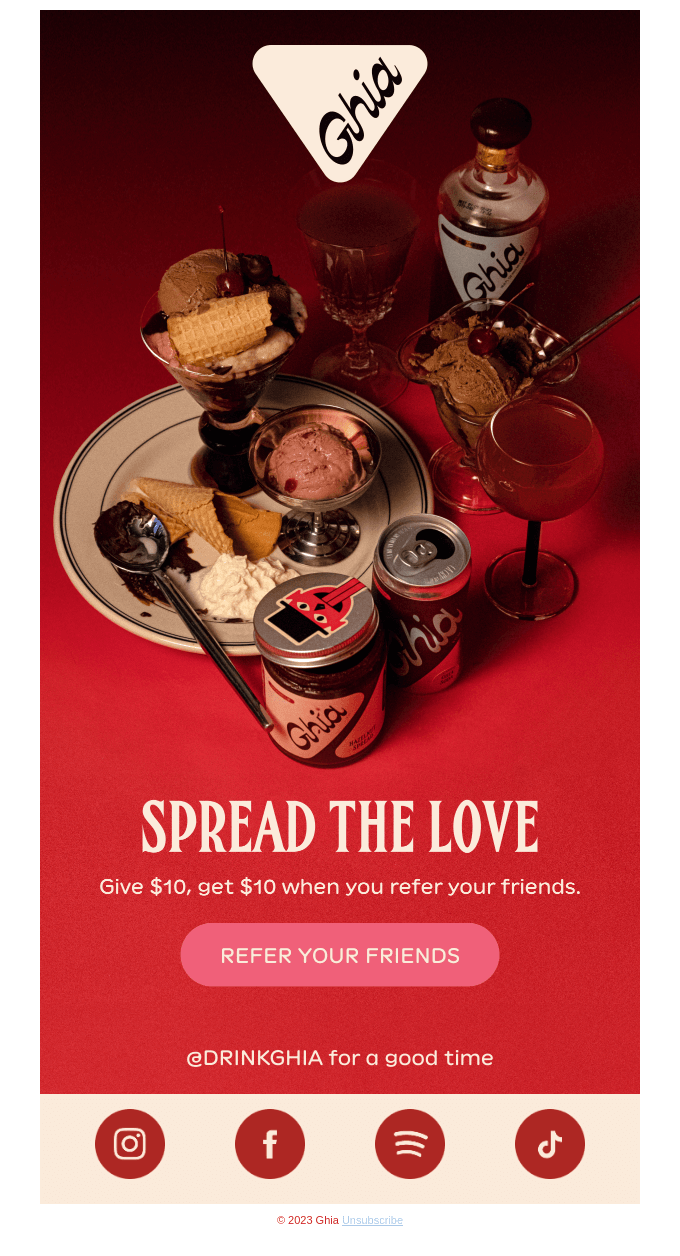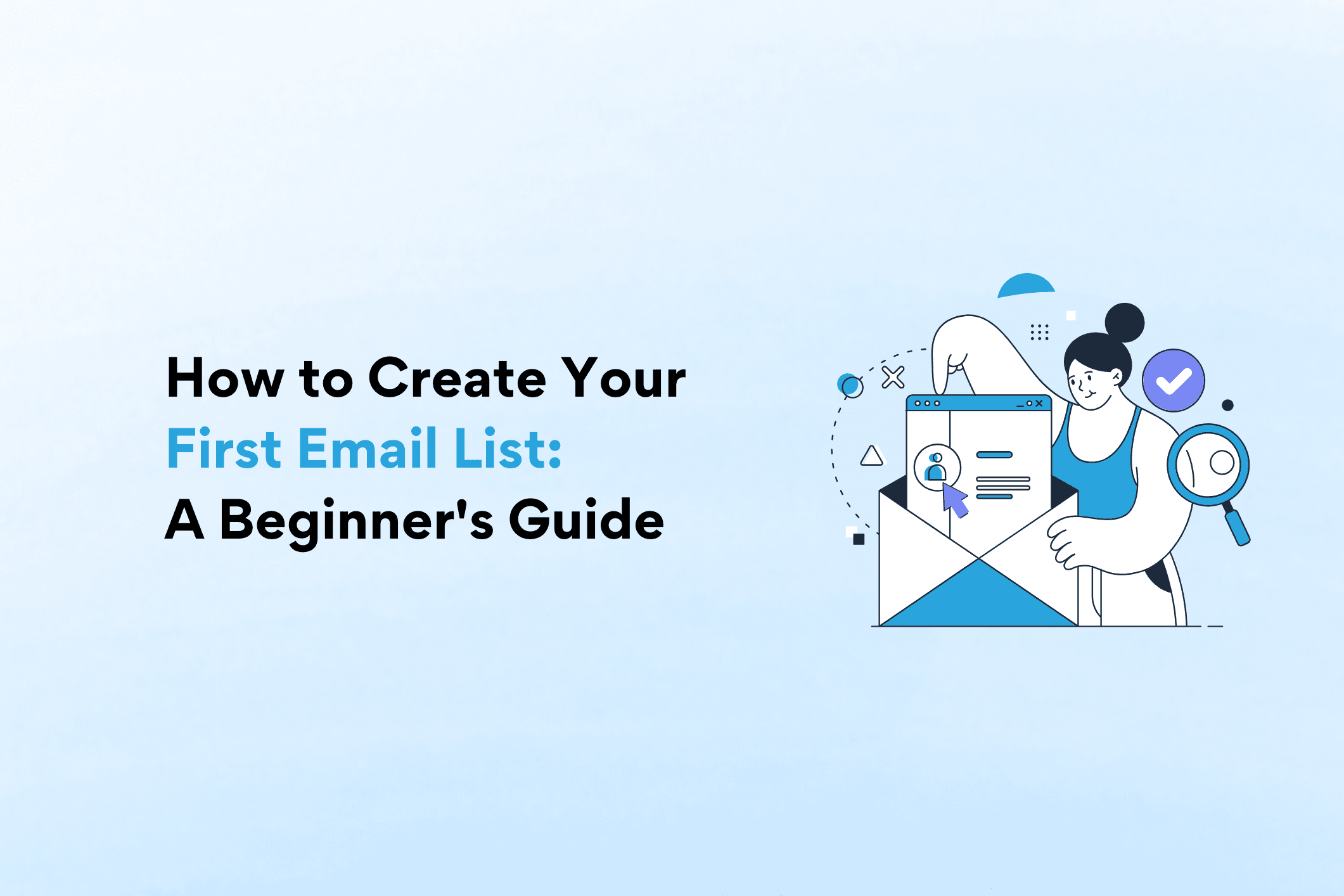Picture this: You’re sipping your morning coffee and go to check your inbox, and there it is—an irrelevant promotional email that leaves you wondering, “Why on earth am I getting this?”
Whether an email is recommending products you would never buy or a message talking about a cause that you’ve never expressed an interest in, we’ve all had this experience.
And let’s be honest, no one likes getting emails they’re not interested in.
Well, here’s the scoop—email marketing has stepped up its game big time. Forget those generic bulk emails; it’s all about personalization now. And you know why? 63% of shoppers wave goodbye to brands that fumble their personalization game, and 72% of customers say they only engage with content tailored to their unique interests.
Taking the complexity out of email personalization is the key to doing it right. If you stick to the basics, get the right customer data, and tie every email campaign to your brand, you can give subscribers the experience they yearn for.
Trust us, it’s worth it. Personalized offers can bring in 5-8X the ROI of non-personalized offers.
Ready to get those orders in the bag?
Let’s do it! 👇
What is Email Marketing Personalization for eCommerce?
Email marketing personalization for eCommerce refers to the practice of tailoring email marketing campaigns to the individual preferences and behaviors of customers or prospects who have engaged with an online store.
But using email marketing personalization for campaigns goes beyond just sending customers better product recommendations. It’s about meeting expectations. 71% of consumers expect their experience to be personalized. What we mean by that is:
- Contextual data
- Personalized product recommendations
- Exclusive offers and discounts
- Personalized subject lines
- Dynamic content that changes depending on the customer
- Abandoned cart follow-ups
The result of all of these strategies?
Stronger relationships with customers and more money in your brand’s pocket.
How to Create Personalized Email Marketing For eCommerce
While personalized email marketing holds immense potential for eCommerce, mastering its techniques can pose a challenge, especially for beginners.
Here are six best practices to guide you through 👇
1. Define your target audience
Establishing a target audience is crucial for integrating personalization into your email marketing strategy, as it ensures that your emails truly resonate with your customers.
When defining your target audience, ask yourself questions like: What are their demographics? What are their interests? What does their buying behavior look like? What are their product preferences?

Now, how does this help?
Understanding Jade’s income level, interests, and communication preferences sets the stage for crafting precisely targeted emails. Recognizing her inclination to be an impulse buyer within a specific spending range, your strategy should revolve around campaigns like limited-time sales or enticing products, strategically leveraging her FOMO to capture her attention with ease.
2. Collect customer information
The key to a winning personalized email lies in your understanding of your customers—And it all kicks off with the collection of customer information:
- Leverage multiple channels to gather data: Maximize your range of data collection and capture information at different stages of the customer journey with email, SMS, social media, and integrated forms.
- Simplify your form fields: Keep it short and sweet. Don’t burden your customers with a lengthy form loaded with questions—stick to gathering the essential information.
- Incentivise sign-ups: Offer a cheeky discount or special offer to increase customer sign-ups to your email list and start collecting other data like buying behavior and personal preferences.
3. Segment your audience
Segmenting your contacts based on their purchase history is one of the best ways to send high-performing, targeted email campaigns.
For 60% of consumers, a personalized shopping experience is the key to becoming repeat customers. But you can only do this if you have the data to create targeted campaigns. We’re talking about information like purchase history, ordering frequency, demographics, interests and preferences.
Let’s say you want to segment users based on their lifetime value. You can create triggered emails to send to high-value customers who have made more than four purchases and spent a total of $1500+.
As a result, you can send personalized product recommendations with slightly higher price tags than what you would send a new customer.
4. Personalize subject lines
You can send the most targeted, on-point email of your life to a customer… But if the subject line sucks, it’s probably going to end up in the trash 🗑️
Across the board, study after study proves that personalizing subject lines lands better with customers. It can increase open rates by 50% and lead to 58% higher click-to-open rates. More importantly, a lot of marketers believe email personalization strategies are the key to customer outreach, with 40% saying it is the sturdiest measure of success.
It doesn’t have to be complicated. Try these super simple strategies to personalize emails and your subject lines:
- Hint at buying behavior: Did the customer recently make a purchase? Or have they been browsing an item but aren’t quite ready to checkout? Mention it in the subject line to let them know you are paying attention.
- Example: “Recommended for you: More products like {recent product purchase}.”
- Mention their location: Send out personalized emails and offers based on the customer’s location.
- Example: “Meet the new kid on the block in {location}”
- Stroke their ego: Are they loyal customers or someone your brand considers a VIP? Well, mention it! Customers love to feel important and get exclusive access to deals or product releases.
- Example: “Exclusive access for our VIPs: Get 20% off our latest drop”
Again, the right tool will make this easy. Sendlane’s personalization Tags can pull information from your customer’s contact profiles (like their address, name, or location) and add it to email subject lines and copy. You can even add custom tags, so emails and subject lines target specific industries or buying behaviors.
5. Use dynamic content
Incorporating dynamic content in email marketing means that the email content changes based on the subscribers’ unique interests, engagement, and behavior.
You have probably experienced dynamic content yourself. Ever browsed and clicked on a few products on a site and then received a product recommendation email a few hours later suggesting the same or similar products?
Yeah, that’s no accident.
You can use dynamic content to personalize every part of an email, including:
- Subject lines
- CTA’s
- Product images
- Reviews/UGC
- Video content
- Targeted recommendations
Anything that makes your email more relevant and engaging to individual subscribers falls under the dynamic content umbrella.
This strategy packs a punch when it comes to boosting revenue. According to Barilliance, customer sessions featuring five product recommendations have an average order value (AOV) of around $400. Remove those recommendations and that number drops to just $44.
6. Test, optimize and automate your email campaigns
Now that you know what ingredients you need for a personalized email campaign—it’s time to get cookin’.
Begin by testing and refining each email campaign your brand launches. This not only helps prevent any awkward missteps in your customers’ inboxes but also provides valuable insights into their preferences. We suggest experimenting with different elements—email subject lines, copy, images, videos, and calls-to-action to identify what resonates most with your audience.
Finish it off by automating highly personalized email campaigns. This guarantees that your messages reach your customer’s inbox at the optimal time, such as during cart abandonment or product launches, maximizing engagement and boosting conversion rates.
Thanks to Sendlane’s pre-built automation funnels, you can automate campaigns for product recommendations, abandoned carts, post-purchase and re-engagement.
Not that you know the nuts and bolts of what goes into a personalized eCommerce email, let’s take a look at the best ways to use it 👇
6 Ideas for Personalized eCommerce Email Marketing
1. Welcome Emails
The email equivalent of saying hello to someone walking into a brick-and-mortar store.
These emails are sent to new customers or subscribers and are your first opportunity to introduce your brand. They normally include a quick story about your store, product information, or even a first-time purchase discount.
Here is a great example of a welcome email from Little Beast:

What makes this welcome email stand out is the special welcome discount and its deliberate focus on Little Beast’s unique qualities that set it apart in the market.
It’s essential to establish expectations right from the first email, and by seamlessly blending an exclusive offer, brand education, and highlights of their best sellers, you can create a strong impression. Information like their 5% donation to animal non-profits and the ethical production of their products is seamlessly woven in, laying the foundation for building brand loyalty from the very beginning.
2. Newsletter
Newsletter emails are the bread and butter of eCommerce marketing.
They are sent to subscribers regularly to keep them in the loop about your brand’s products, sales, or promotions. At a very basic level, newsletter campaigns are great for keeping customers engaged and interested in what your brand is doing.
Olipop does a great job of this in their newsletters. Take a look at this one:

This email not only echoes the vibrant voice of Olipop but also seamlessly communicates the essence of their unique brand message. It does an excellent job of blending product promotions and valuable insights, all delivered with an intimate, personal touch that emanates the warmth of genuine, real people.
This one covers all of the bases.
3. Wishlist Emails
A wishlist email is sent to customers who have added items to a wishlist on your website.
This email reminds them of the items they’ve saved and encourages them to come back to the checkout with strategies like discounts or FOMO. This is also a great way to inform customers about restocked items and get them to complete their order.
Here’s an example from Rael:

This email is simple and sleek. It reminds them of the item they’ve been waiting for and includes a clear CTA straight to their item. They get creative with the copy and even sneak a few more product recommendations in there with the “There’s More to Love.”
4. Promotional Emails
A promotional email is sent to customers to promote a specific product or service, often including a discount or special offer.
Just check out this example from Selfmade:

This email isn’t just about pushing a product—it sweetens the deal with an exclusive discount, creating an irresistible offer. What sets it apart is the creative integration of User-Generated Content (UGC) to spotlight the serum’s effectiveness. It’s a savvy move that not only markets the product effectively but also fosters trust and brand loyalty among your customer base.
5. Referral Emails
A referral email is when a customer refers a friend or family member to your brand’s website.
As a thank you, they’re offered a reward or incentive for spreading the good word about your store. These campaigns are great to get business from customers who may not have known about your products, but it’s also a great way to build loyalty with existing customers. I mean, who doesn’t love a reward or incentive for just getting their friend to shop at your store?!
This referral email by Ghia is a great example:

Ghia’s referral email is a prime example of simplicity and effectiveness. By encouraging customers to refer a product to a friend, the straightforward copy not only makes the call to action clear but also presents a win-win scenario—rewarding both the customer and their referred friend with a $10 incentive while growing your customer base.
This approach not only engages the audience but also capitalizes on the power of word-of-mouth marketing in a mutually beneficial way.
6. Dynamic Content Emails
A dynamic content email is an email that includes personalized content based on the recipient’s interests, behaviors, or preferences.
Any data you collect can help personalize the email to speak to the customer.
Just look at this example from Cole Haan:

This example is great because it provides a variety of product options that are recommended based on the customer’s unique tastes. Delivering content that speaks directly to individual preferences, fosters stronger customer relationships and boosts overall engagement.
How to put Personalized Emails on Autopilot
The key to nailing a successful personalized email marketing strategy for eCommerce brands is 100% down to your email marketing software. The role your infrastructure plays in collecting customer data, creating custom messages, and testing elements to see what your subscribers engage with is crucial.
Yes, we’re biased. But the perfect email marketing tool for personalization does exist—Sendlane. It can collect and leverage contextual data from your audience to personalize every message to your audience based on their intent.
Book your free demo of Sendlane today.

As someone consistently recognized for her talent in writing, storytelling, art, and technology, it’s not shocking that Caitlin realized her passion for marketing exceptionally early in her career. As the Head of Marketing, Caitlin leads, develops, and accelerates Sendlane’s strategy and brand recognition. Known as Sendlane’s “Brand Warrior”, Caitlin is credited for the bold, disruptive, and innovative branding behind the pink envelope. Joining Sendlane as the 6th employee and the 1st marketing hire, Caitlin has since worked diligently alongside the Founder & CIO to nurture the department into the high-performing and creative powerhouse it is today.


